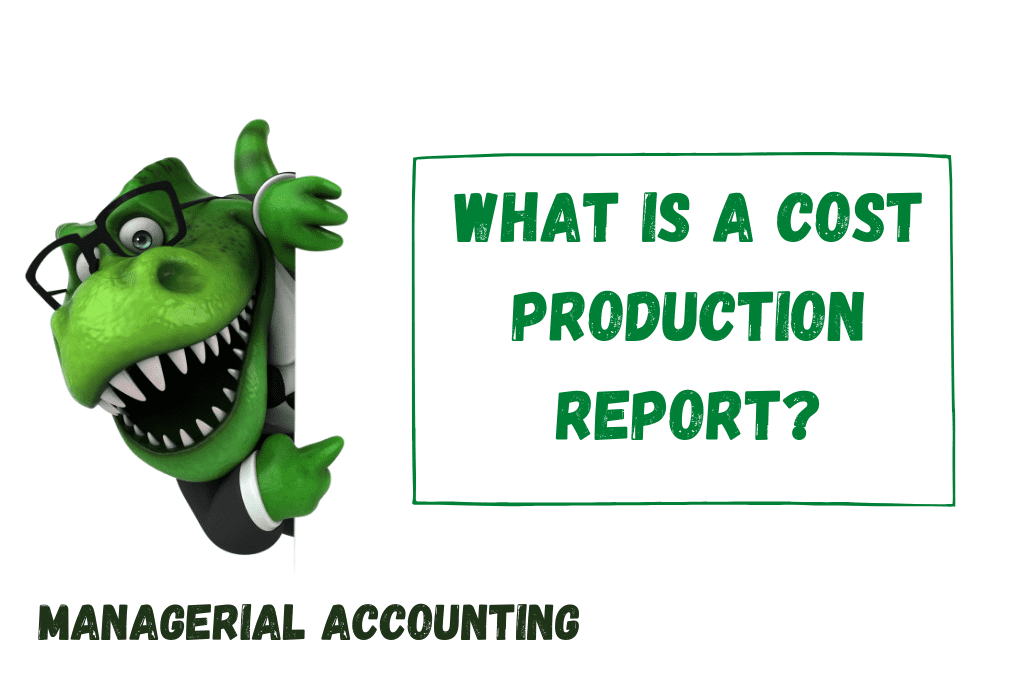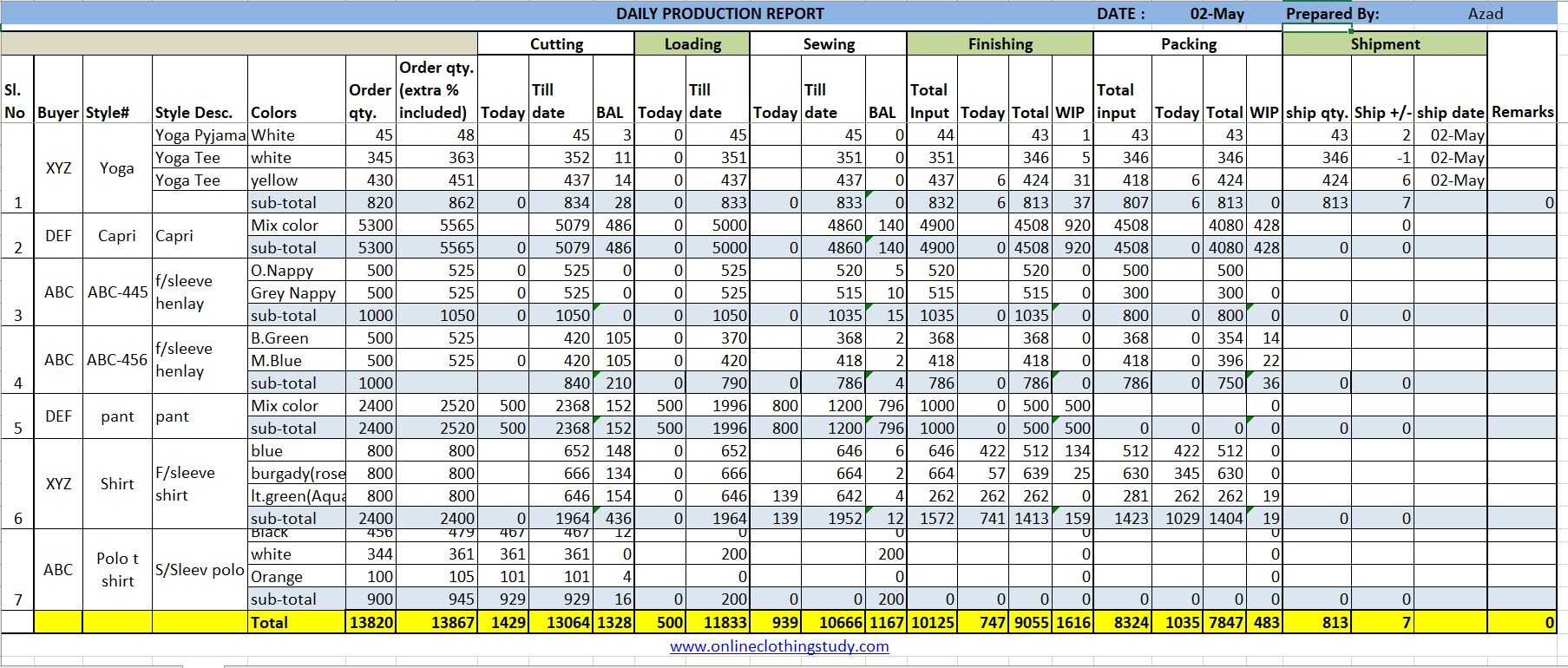Cost of Production Report Managerial Accounting Vocab, Definition, Explanations Fiveable

Monitoring and controlling that process ensures that deadlines are met and costs aren’t exceeded. One way to keep track of the manufacturing process is with a production report. And they always stay the same regardless of the number of products central venous pressure cvp or services you produce. Increasing your production costs means that you’re going to see a decrease in your cash on hand. This is why these types of production cost expenses will impact cash flow and the overall pricing structure.
Do you already work with a financial advisor?
The figures disclosed in the trial balance of a manufacturing concern may relate to raw materials, direct labor, and factory overheads. A financial analyst might use COGM as a key indicator of a company’s efficiency. By comparing COGM with total sales, analysts can assess the gross margin and determine if a company is managing its production costs effectively.

Calculating Direct Materials and Labor Costs
Track inventory on visual kanban boards and line workers can complete tasks on the list view and stakeholders can get a monthly overview with the calendar view. It’s a measurement to ensure that activities are performed correctly the first time to avoid the need for rework, which takes time and adds costs to production. Production downtime refers to the time a factory’s assembly lines aren’t operating. By reducing the downtime, production managers can increase the productivity of their manufacturing efforts. Scheduling production, planning a budget and allocating resources only sets up manufacturing for success.
What is your current financial priority?
Production volume measures how many units are manufactured over a specific period. This is a fundamental benchmark for manufacturing efficiency and helps production managers understand the total output the factory can produce. The production volume to be manufactured by an organization should be determined by its production budget. It’s also important to recognize that simply reducing production costs won’t necessarily generate more profit. There’s always a need to have certain raw materials and labor to ensure your product or service is high-quality.
This metric reflects the direct costs attributable to the production of the goods sold by a company. It includes material costs, direct labor, and overhead directly tied to the production process. By dissecting COGS, stakeholders can glean insights into the efficiency of production, the pricing strategy, and ultimately, the profitability of the products.
Create a Free Account and Ask Any Financial Question
For example, consider a car manufacturer that starts with 100 units of raw steel (valued at $50 each) and incurs labor costs of $20 per unit. If 50 units are halfway through the assembly process, the WIP Inventory would include the cost of steel ($50 x 50 units) and half the labor costs ($10 x 50 units), totaling $3,000. This example highlights how WIP Inventory reflects ongoing production costs and underscores the importance of accurate tracking and valuation. According to the accounting records, direct materials transferred to the mixing department were costed at $3,575 and direct labor and factory overhead were $3,640. A cost of production report is a document used by manufacturers to calculate the cost of producing goods during a specific period.
- Understanding the key components of a Cost of Production Report is crucial for any manufacturing business aiming to streamline its operations and maximize profitability.
- But for a production cost to get labeled as an expense, it must get incurred when producing the product or service.
- From the viewpoint of a production manager, WIP Inventory is a hands-on measure of production flow.
- Doing proper calculations will help with decision-making and increase business sales.
- If a product is more expensive to produce but offers unique benefits, marketing can craft messages that justify the premium price.
- Jami has collaborated with clients large and small in the technology, financial, and post-secondary fields.
This report is used to determine the cost of goods sold and to determine the value of inventory. The cost of production report is commonly used in process costing systems where goods are produced through a series of processes and not produced individually. When you add together both the variable costs and fixed costs they’re going to equal the total cost.
It’s the compass that guides a company through the complex waters of production economics, ensuring that every decision is backed by solid data and a clear understanding of the cost implications. The mixing department started another 3,250 shells during February, and at the end of the month, there were still 1,000 shells being mixed and prepped for baking. They were only 25% complete as to conversion but 100% of the direct materials had been added (because they are added at the beginning of the process). Notice that the basic data are at the top of the spreadsheet, and the rest of the report is driven by formulas. Each month, the data at the top are changed to reflect the current month’s activity, and the production cost report takes care of itself.
Notice that the basic data are atthe top of the spreadsheet, and the rest of the report is driven byformulas. Each month, the data at the top are changed to reflectthe current month’s activity, and the production cost report takescare of itself. Variable costs will have price fluctuations depending on if there are changes in production. It was mentioned above, but the type of business you operate and the industry you’re in can impact production costs.
It’s a vital component for any manufacturer serious about understanding and improving their production process. Under the weighted average method, costs transferred in from last month are added to this month’s costs and distributed across all units. This is the simplest way to account for beginning inventory costs, but not always the most accurate. For example, if costs are going up, the cost of those 750 pie shells in beginning work in process inventory would be less than the cost of the 1,000 pie shells in ending inventory. Teams don’t need all the bells and whistles of a Gantt chart or sheet view, which is why multiple project views share the schedule and update simultaneously.
Production managers use the production report to monitor production to increase efficiency. While a production report can cover a wide range of metrics, generally, it has a core set of KPIs. Production reporting is also used to identify weaknesses that can be addressed and resolved to have production run more efficiently. Some issues that a production report can capture include bottlenecks, unplanned downtime and poor machine utilization.
